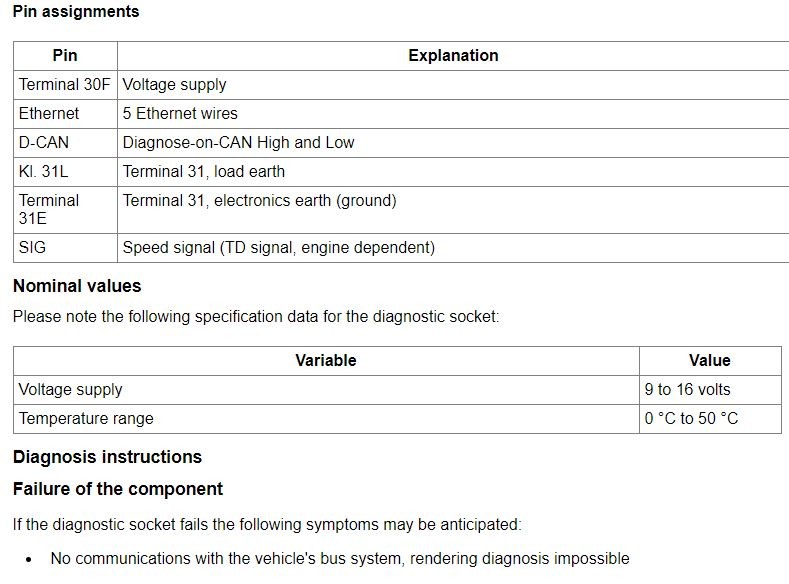The OBD2 port on your E36 M3 isn’t working? Don’t worry, you’re not alone. This is a common issue, and this guide will walk you through troubleshooting steps to pinpoint the problem.
The first step is to check fuse 12 in the Front Electronics Module (FEM), located in the passenger A-pillar area. This fuse powers the OBD2 port. However, a blown fuse 12 would also affect your DSC and HVAC systems. If those are functioning, the fuse is likely fine.
Next, using a multimeter, measure the DC voltage at the OBD2 port. You should have battery voltage (Terminal 30F), load earth (Terminal 31L), and electronics earth (Terminal 31E). Battery voltage is crucial for powering external scan tools.
A terminating resistor (approximately 120 ohms) sits between pins 6 and 14 (CAN diagnosis connection). Pin 9 carries the engine speed signal (engine-dependent). An Ethernet connection requires 5 pins, indicating potential issues beyond just power; the socket or resistor might be faulty.
Thoroughly inspect the wiring harness from the OBD2 port to the FEM for breaks or shorts. If the wiring appears intact, verify power and ground at the FEM itself.
Consider any other issues the car might be experiencing. A shared cause could be the culprit. Try driving the car and utilizing all its functions to potentially uncover a related fault. In some cases, the previous owner might have modified the wiring, perhaps to deter theft. If possible, contacting them could provide valuable insights. Remember, a functioning OBD2 port is essential for diagnostics. This systematic approach will help you get your E36 M3’s OBD2 port back online.

